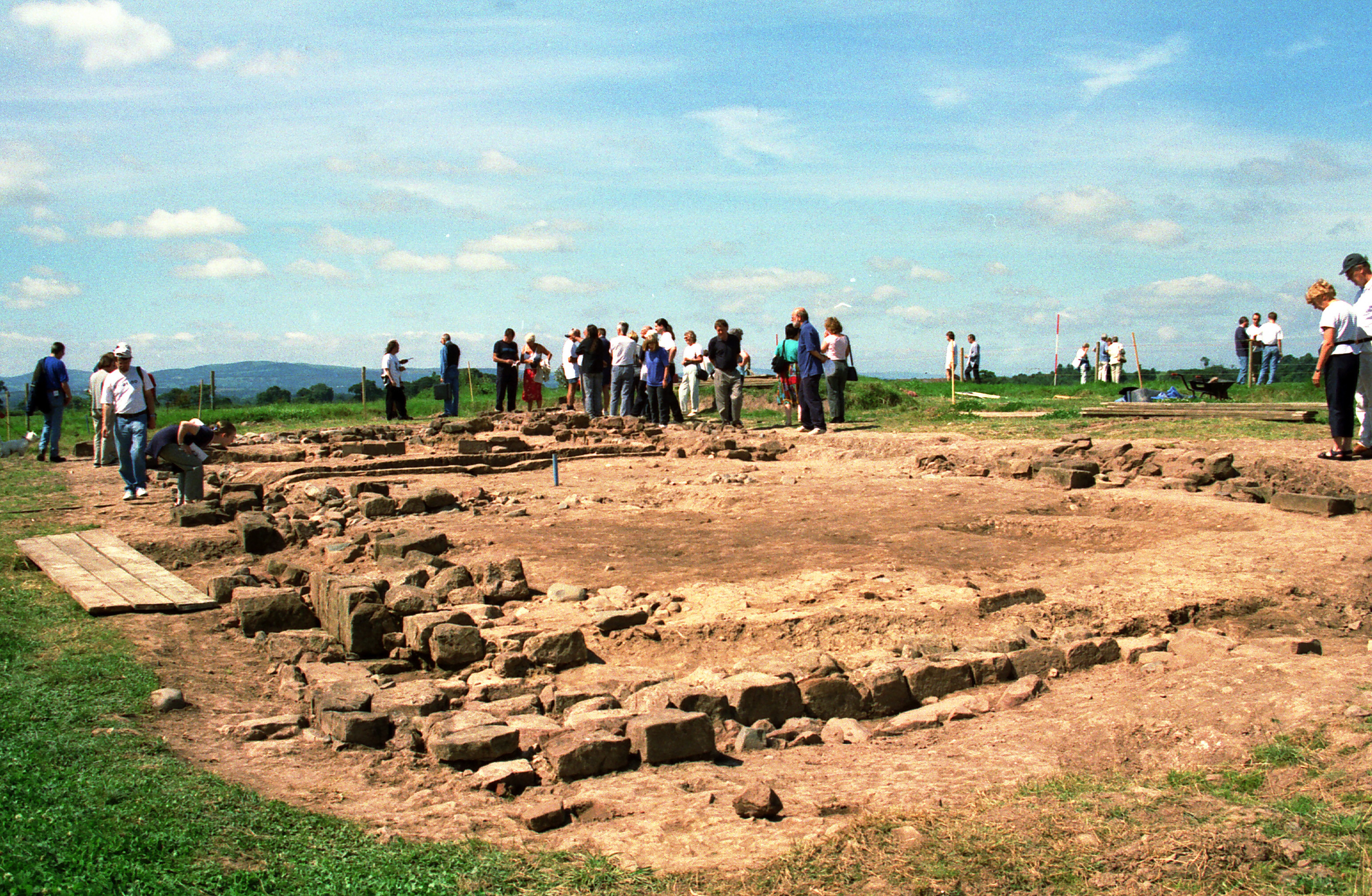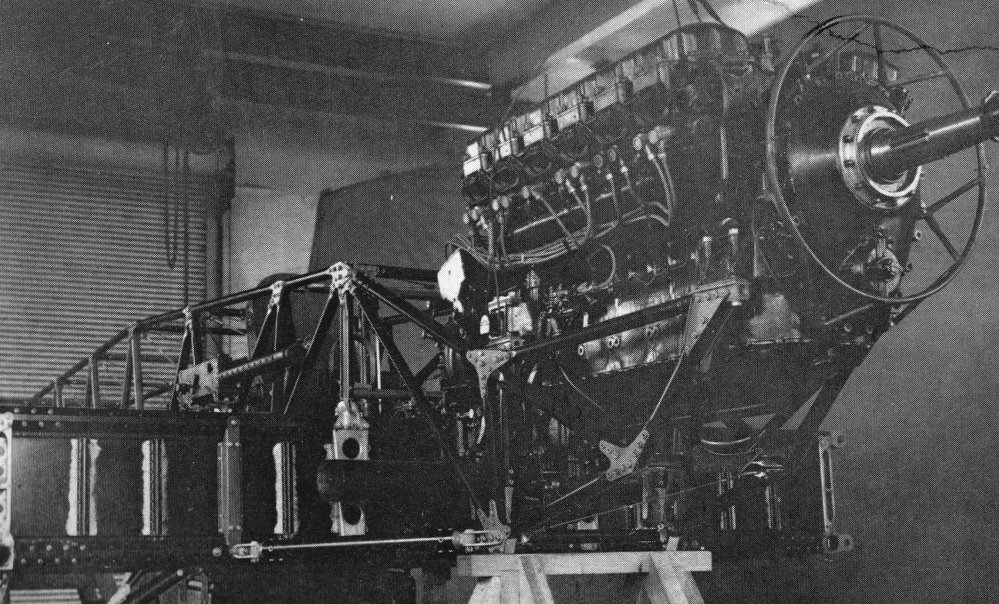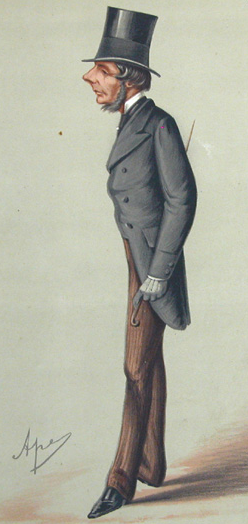|
Poulton, Cheshire
Poulton is a settlement and former civil parish, now in the parish of Poulton and Pulford, in the Cheshire West and Chester, in the ceremonial county of Cheshire, England. In 2001 census the parish had a recorded population of 92. Since 1995, significant archaeological activity has been conducted in the area, first by the University of Liverpool and later by the independent group known as the Poulton Research Project. History Archaeological research has established there has been human habitation in the area since the Mesolithic period (8,000 B.C.). In the Sub-Roman Britain period, Iron Age roundhouse ditches, Briquetage and animal bones have also been found suggesting the area was once an important site for the processing and preserving of meat for trading. Roman finds include ditches, domestic ceramics and building materials relating to the Legio XX Valeria Victrix that was garrisoned at the nearby legionary fortress of Deva Victrix (Chester). During the medieval period, ... [...More Info...] [...Related Items...] OR: [Wikipedia] [Google] [Baidu] |
Poulton And Pulford
Poulton may refer to: Places in England *Poulton, Cheshire ** RAF Poulton * Poulton-with-Fearnhead, civil parish in Warrington, Cheshire *Poulton, Merseyside, an area of Wallasey ** Liscard and Poulton railway station *Poulton, Gloucestershire *Poulton or Poulton Lancelyn, a locality in Bebington, Merseyside *Poulton-le-Fylde, Lancashire *Poulton-le-Sands, the village that became Morecambe, Lancashire People with the surname * Alonzo Poulton, English footballer * Bruce Poulton (1927–2015), American university administrator * Diana Poulton (1903–1995), English lutenist * Edward Bagnall Poulton (1856–1943), British zoologist * Edward Palmer Poulton (1883–1939), British physician and physiologist * Ferdinand Poulton (1601–1641), English missionary * George Poulton (1929–2010), English footballer * George R. Poulton (1828–1867), English songwriter * Harry Poulton (born 1919–1981), Canadian sprint canoer * Henry Mortimer Poulton (1898–1973), administrator in ... [...More Info...] [...Related Items...] OR: [Wikipedia] [Google] [Baidu] |
Poulton Chapel
Poulton Chapel was a medieval chapel in the hamlet of Poulton, Cheshire, England (), close to the modern border with Wales. It was built around 1153 by the monks of Poulton Abbey. After the monks moved to Dieulacres between 1199 and 1214 and the abbey was turned into a farming estate for the monks, the chapel served as a one room church for the lay brothers working the land. In the 1487 the chapel was expanded when the estate was leased to the Manley family. During the English Civil War (1642-1651) the chapel was used as a stable and lookout. By 1672 it lay in ruins and by 1718 it was demolished. No above ground structures are extant. Foundation and history The earliest ecclesiastical structure on the site is thought to have been a single-cell structure built in the Saxon period, as evidenced by some 170 pieces of Anglo Saxon pottery, specifically 10th century Chester Ware, that have been found in conjunction with the earliest phase of construction. The later chapel is thoug ... [...More Info...] [...Related Items...] OR: [Wikipedia] [Google] [Baidu] |
Hawker Hurricane
The Hawker Hurricane is a British single-seat fighter aircraft of the 1930s–40s which was designed and predominantly built by Hawker Aircraft Ltd. for service with the Royal Air Force (RAF). It was overshadowed in the public consciousness by the Supermarine Spitfire during the Battle of Britain in 1940, but the Hurricane inflicted 60% of the losses sustained by the ''Luftwaffe'' in the campaign, and fought in all the major theatres of the Second World War. The Hurricane originated from discussions between RAF officials and aircraft designer Sir Sydney Camm about a proposed monoplane derivative of the Hawker Fury biplane in the early 1930s. Despite an institutional preference for biplanes and lack of interest by the Air Ministry, Hawker refined its monoplane proposal, incorporating several innovations which became critical to wartime fighter aircraft, including retractable landing gear and the more powerful Rolls-Royce Merlin engine. The Air Ministry ordered Hawker's ''Interce ... [...More Info...] [...Related Items...] OR: [Wikipedia] [Google] [Baidu] |
RAF Poulton
Royal Air Force Poulton or more simply RAF Poulton (X4PL) is a former Royal Air Force satellite station located near Poulton, Cheshire and was operational from 1 March 1943 until 1945. It was used as an Operational Training Unit (OTU) and Tactical Exercise Unit (TEU) for Hawker Hurricanes. History It was part of 12 Group and was used as a satellite of RAF Hawarden. It had 8 Blister and 1 Bessonneau hangars. Based units and aircraft * No. 3 Tactical Exercise Unit RAF (TEU), using the Hawker Hurricane. Arrived Nov 43. Possibly moved to Aston Down on 18 Dec 44 and re-designated as No 55 OTU. * No. 12 (Pilots) Advanced Flying Unit RAF ((P) AFU), using the Airspeed Oxford. * No. 1515 (Beam Approach Training) Flight RAF, almost certainly using the Airspeed Oxford. * No. 41 Operational Training Unit RAF (OTU) (Day Fighter Wing), possibly using the Hawker Hurricane. Moved to Poulton from Hawarden 1 Feb 45, and was re-designated as... * No. 58 OTU on 15 Mar 45, using the Supermarin ... [...More Info...] [...Related Items...] OR: [Wikipedia] [Google] [Baidu] |
Second World War
World War II or the Second World War (1 September 1939 – 2 September 1945) was a World war, global conflict between two coalitions: the Allies of World War II, Allies and the Axis powers. World War II by country, Nearly all of the world's countries participated, with many nations mobilising all resources in pursuit of total war. Tanks in World War II, Tanks and Air warfare of World War II, aircraft played major roles, enabling the strategic bombing of cities and delivery of the Atomic bombings of Hiroshima and Nagasaki, first and only nuclear weapons ever used in war. World War II is the List of wars by death toll, deadliest conflict in history, causing World War II casualties, the death of 70 to 85 million people, more than half of whom were civilians. Millions died in genocides, including the Holocaust, and by massacres, starvation, and disease. After the Allied victory, Allied-occupied Germany, Germany, Allied-occupied Austria, Austria, Occupation of Japan, Japan, a ... [...More Info...] [...Related Items...] OR: [Wikipedia] [Google] [Baidu] |
Staffordshire
Staffordshire (; postal abbreviation ''Staffs''.) is a Ceremonial counties of England, ceremonial county in the West Midlands (region), West Midlands of England. It borders Cheshire to the north-west, Derbyshire and Leicestershire to the east, Warwickshire to the south-east, the West Midlands (county), West Midlands county and Worcestershire to the south, and Shropshire to the west. The largest settlement is the city of Stoke-on-Trent. The county has an area of and a population of 1,131,052. Stoke-on-Trent is located in the north and is immediately adjacent to the town of Newcastle-under-Lyme. Stafford is in the centre of the county, Burton upon Trent in the east, and the city of Lichfield and Tamworth, Staffordshire, Tamworth in the south-east. For local government purposes Staffordshire comprises a non-metropolitan county, with nine districts, and the Unitary authorities of England, unitary authority area of Stoke-on-Trent. The county Historic counties of England, historical ... [...More Info...] [...Related Items...] OR: [Wikipedia] [Google] [Baidu] |
Dieulacres Abbey
Dieulacres Abbey was a Cistercian monastery established by Ranulf de Blondeville, 6th Earl of Chester, Ranulf, Earl of Chester at Poulton, Cheshire, Poulton in Cheshire. It moved to the present site at Abbey Green, Staffordshire Moorlands, Abbey Green near Leek, Staffordshire in 1214, possibly in part as a result from raids at the former site by Welsh marauders. History The name means 'may God increase it,' and is derived from the purported exclamation of the wife of Ranulf, when he informed her of a dream in which he was requested to move the abbey from Poulton Abbey, Poulton by his deceased grandfather. After his death his heart was removed and buried within the abbey, and his body elsewhere; which now seems unusual but appears to have been a common custom during much of the medieval period. During the 13th century there were numerous disputes with other monasteries in the area, such as Croxden Abbey and Trentham Priory, regarding the access and ownership of land, especiall ... [...More Info...] [...Related Items...] OR: [Wikipedia] [Google] [Baidu] |
Butler Dynasty
Butler () is the name of a noble family whose members were, for several centuries, prominent in the administration of the Lordship of Ireland and the Kingdom of Ireland. They rose to their highest prominence as Dukes of Ormonde. The family has produced multiple titles such as Baron Cahir, Baron Dunboyne, Viscount Ikerrin, Viscount Galmoye, Viscount Mountgarret, Viscount Thurles, Earl of Carrick, Earl of Kilkenny, Earl of Ormond, Earl of Ossory, Marquess of Ormonde and Duke of Ormonde. Variant spellings of the name include ''le Boteler'' and ''le Botiller''. The Butlers were descendants of Anglo-Norman lords who participated in the Norman invasion of Ireland in the 12th century. The surname has its origins in the hereditary office of "Butler (cup-bearer) of Ireland", originating with Theobald Walter, 1st Chief Butler of Ireland. The arms of later family members depicted three cups in recognition of their original office. Origin The family descended from Theobald W ... [...More Info...] [...Related Items...] OR: [Wikipedia] [Google] [Baidu] |
Imperial Gazetteer Of England And Wales
The ''Imperial Gazetteer of England and Wales'' is a substantial topographical dictionary first published between 1870 and 1872, edited by the Reverend John Marius Wilson. It contains a detailed description of England and Wales. Its six volumes have a brief article on each county, city, borough, civil parish, and diocese, describing their political and physical features and naming the principal people of each place. The publishers were A. Fullarton and Co., of London & Edinburgh. The work is a companion to Wilson's '' Imperial Gazetteer of Scotland'', published in parts between 1854 and 1857. The text of the Imperial Gazetteer is available online in two forms, as images paid for on the Ancestry web site, and as freely accessible searchable text on A Vision of Britain through Time, which also accesses Groome's ''Ordnance Gazetteer of Scotland'' and the Bartholomew ''Gazetteer of the British Isles''. Volumes 1–4 and 6 (i.e. all but volume 5) are available at the Internet Archive ... [...More Info...] [...Related Items...] OR: [Wikipedia] [Google] [Baidu] |
John Marius Wilson
John Marius Wilson (c. 1805–1885) was a British writer and an editor, most notable for his gazetteers. The '' Imperial Gazetteer of England and Wales'' (published 1870–1872), was a substantial topographical dictionary in six volumes. It was a companion to his '' Imperial Gazetteer of Scotland'', published 1854–1857. He was born in Lochmaben, Dumfriesshire, in about 1805, and was ordained as a Congregationalist minister, working for a time in County Galway County Galway ( ; ) is a Counties of Ireland, county in Republic of Ireland, Ireland. It is in the Northern and Western Region, taking up the south of the Provinces of Ireland, province of Connacht. The county population was 276,451 at the 20 ..., Ireland. From the late 1840s onwards, he devoted himself to writing and editing, living in Edinburgh, where he died in 1885, aged 80. Selected works * ''The Farmer's Dictionary or a cyclopedia of agriculture in all its departments, principles, methods, recent improvement ... [...More Info...] [...Related Items...] OR: [Wikipedia] [Google] [Baidu] |
Douglas And Fordham
John Douglas (11 April 183023 May 1911) was an English architect who designed over 500 buildings in Cheshire, North Wales, and northwest England, in particular in the estate of Eaton Hall. He was trained in Lancaster and practised throughout his career from an office in Chester. Initially he ran the practice on his own, but from 1884 until two years before his death he worked in partnerships with two of his former assistants. Douglas's output included new churches, restoring and renovating existing churches, church furnishings, new houses and alterations to existing houses, and a variety of other buildings, including shops, banks, offices, schools, memorials and public buildings. His architectural styles were eclectic. Douglas worked during the period of the Gothic Revival, and many of his works incorporate elements of the English Gothic style. He was also influenced by architectural styles from the mainland of Europe and included elements of French, German and Dutch arc ... [...More Info...] [...Related Items...] OR: [Wikipedia] [Google] [Baidu] |
Hugh Grosvenor, 1st Duke Of Westminster
Hugh Lupus Grosvenor, 1st Duke of Westminster, (13 October 1825 – 22 December 1899), styled Viscount Belgrave between 1831 and 1845, Earl Grosvenor between 1845 and 1869, and known as The Marquess of Westminster between 1869 and 1874, was an English landowner, politician and racehorse owner. He inherited the estate of Eaton Hall in Cheshire and land in Mayfair and Belgravia, London, and spent much of his fortune in developing these properties. Although he was an MP from the age of 22, and then a member of the House of Lords, his main interests were not in politics, but rather in his estates, in horse racing, and in country pursuits. He developed the stud at Eaton Hall and achieved success in racing his horses, who won the Derby on four occasions. Personal life Hugh Lupus Grosvenor was born at Eaton Hall, Cheshire, the second and eldest surviving son of Richard Grosvenor, 2nd Marquess of Westminster and Lady Elizabeth Leveson-Gower, the younger daughter of George Leves ... [...More Info...] [...Related Items...] OR: [Wikipedia] [Google] [Baidu] |





